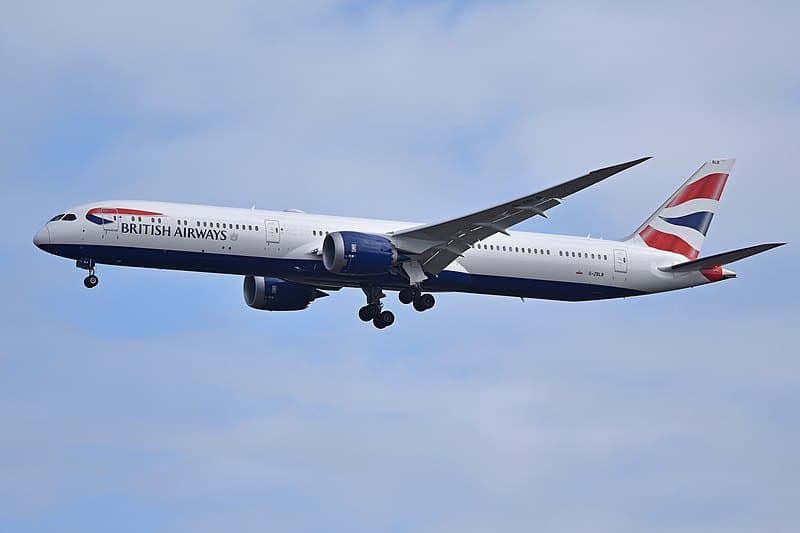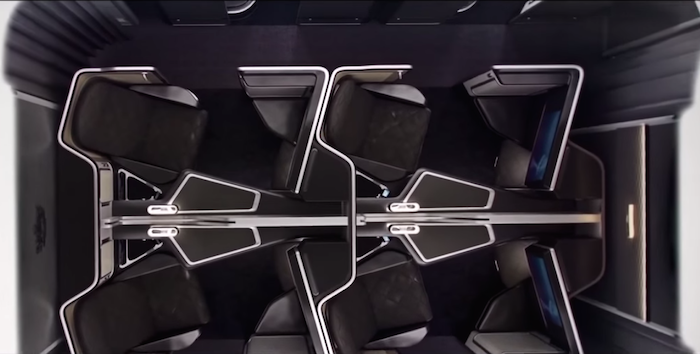Aerospace
First-class cabin interiors for British Airways’ new 787-9 Dreamliner

The new-look BA First has been created specifically for the Boeing 787-9 and will see just eight seats nestled into the Dreamliner’s nose
The aircraft accommodates 127 customers in World Traveller (economy), 39 in World Traveller Plus (premium economy), 42 in Club World (business class) and eight in the new First class cabin.

First-class cabin interiors for British Airways’ new 787-9 Dreamliner


Redesigned to put comfort at the heart of the experience, each First suite is gently lit with ambient lighting. Customers will have extra storage space, including room for shoes, handbags and personal items, a personal suiter for jackets and coats accessible from the seat, and a discreet charging point area next to their armrest.
The seat and in-flight entertainment console has also been updated with a new smartphone-like handset, from which customers can simultaneously watch one item, such as the moving map, while also watching a film, on the new fixed 23 inch widescreen.This also means travellers will be able to enjoy gate-to-gate entertainment, without having to stow their television for take-off and landing.
British Airways began flying between Austin-Bergstrom International Airport and London Heathrow in March 2014, with the 787-8 Dreamliner. This October, First class will be introduced to the Austin community, when service switches temporarily to the Boeing 777.The 787-9, the first of which is due to be delivered to British Airways in September, is 20 feet longer that its 787-8 predecessor, allowing the airline to add First class to the 787 fleet for the first time.
The Boeing 787-8 is a mid-size, dual aisle, twin engine jet and Boeing’s most fuel efficient aircraft to date – 20% more fuel efficient than the similar sized commercial jets it is designed to replace. Composite materials make up 50% of the primary structure, including the fuselage and wings.
The windows are over 30% larger than those on most similarly sized aircraft and the brightness can be adjusted at the touch of a button. Serrated edges on the engine nacelles reduce the noise levels by up to 60% both in- and outside the cabin. The aircraft also features raked wingtips to further improve fuel efficiency.
The Boeing 787-9 – the latest addition to the fleet – features an evolution of our First cabin, with just 8 seats compared to the usual 14, increased range and is 20 feet longer and four inches taller than the 787-8.

Aerospace
Boeing Transfers Rocket Stage to NASA, Paving Way for Human Moon Mission

Boeing has achieved a significant milestone by providing NASA with the second core stage of the Space Launch System (SLS) rocket.
This crucial component, crafted at NASA’s Michoud Assembly Facility (MAF), is set to propel the Artemis II crew into lunar orbit, marking humanity’s return to deep space after a 50-year hiatus.
The monumental Boeing-built rocket stage, the largest element of the Artemis II mission, will embark on a journey aboard the Pegasus barge, traveling 900 miles to NASA’s Kennedy Space Center.
Comparison of two legendary aircraft B777x vs B747 aircraft:Click here
Upon arrival, it will be meticulously integrated with other essential Artemis II components, including the upper stage, solid rocket boosters, and NASA’s Orion spacecraft within the iconic Vehicle Assembly Building. This intricate integration process is a vital step toward the eagerly anticipated Artemis II launch, slated for 2025.
“Boeing-built products helped land humankind on the moon in 1969, and we’re proud to continue that legacy through the Artemis generation,” remarked Dave Dutcher, vice president and program manager for Boeing’s SLS program. “Together, with NASA and our industry partners and suppliers, we are building the world’s most capable rocket and paving the way to deep space through America’s rocket factory in New Orleans.”
NASA, Lockheed Martin Reveal X-59 Quiet Supersonic Aircraft:Click here
The delivery of Core Stage 2 marks a significant achievement in the evolution of the SLS rocket. Towering over 200 feet and powered by four RS-25 engines, this core stage, coupled with two solid-fueled booster rockets, will generate a staggering 8.8 million pounds of thrust. This immense power is crucial to launching Artemis II and future missions into the vast expanse of space.
The SLS rocket stands unparalleled in its capability to transport both crew and substantial cargo to the moon and beyond in a single launch. Its extraordinary capacity will facilitate the delivery of human-rated spacecraft, habitats, and scientific missions to destinations including the moon and Mars, ushering in a new era of space exploration.
-

 Travel1 week ago
Travel1 week agoAir India to Expand US Operations with Three New Routes After a Decade
-

 Travel2 weeks ago
Travel2 weeks agoWhy We Should Avoid These Stamps in a Passport
-

 Airlines1 month ago
Airlines1 month agoInvestigations Reveal Fake Chinese Titanium in Boeing and Airbus Jets
-

 Tech4 weeks ago
Tech4 weeks agoChina’s CATL Plans 1,800-Mile Electric Plane Launch by 2027
-

 Airport3 days ago
Airport3 days agoTop 10 Largest Airports in the World by Size
-

 Aerospace4 weeks ago
Aerospace4 weeks agoChina’s Fighter Jets Turn Wings into Autonomous Drones
-

 Airlines4 days ago
Airlines4 days agoAir India Rolls Out A350s for Delhi-New York JFK and Newark Routes
-

 Defence3 weeks ago
Defence3 weeks agoBoeing Enhances Chinook with New Engines and Block II Upgrades at $96 Million







